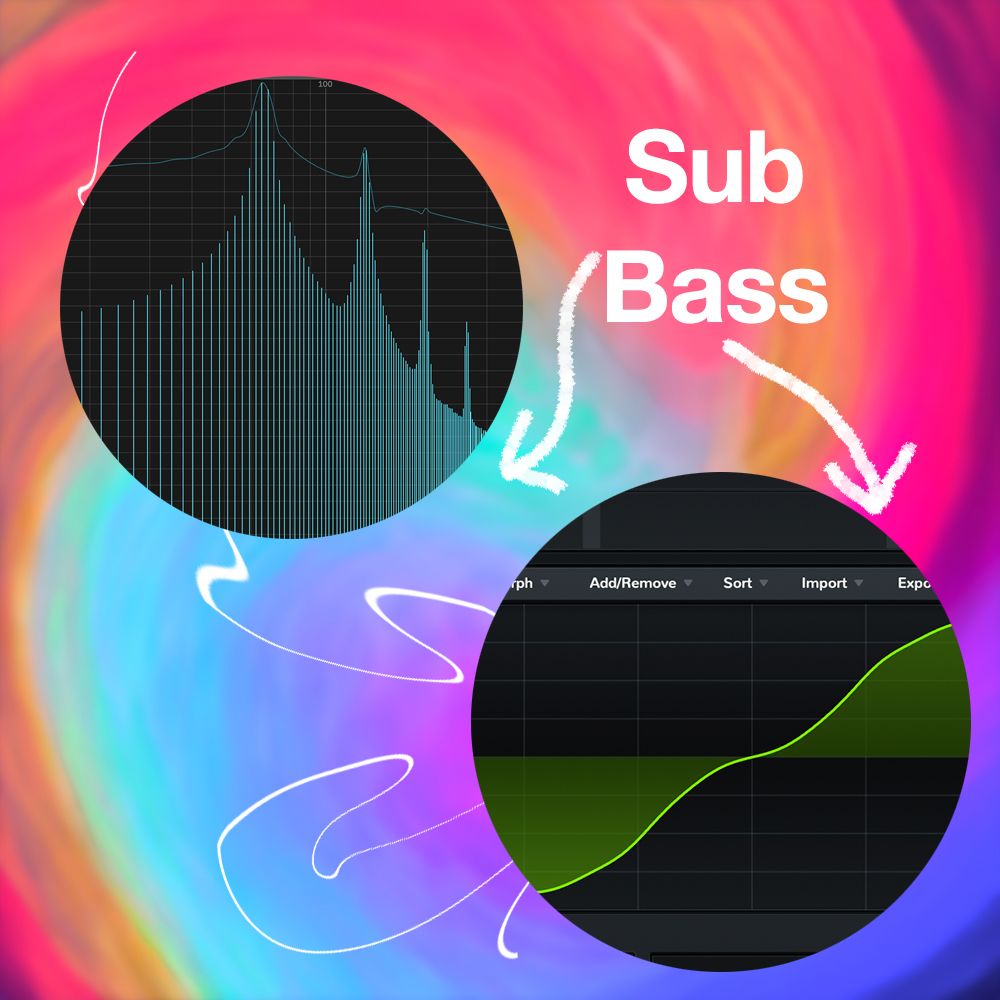Everyone loves a fat bassline! And whether you make Bass Music that is centred around that, or deeper styles where the bassline is less of a prominent feature, the bass frequencies in the mix are still a make or break factor in the success of the track.
Bass frequencies lie at the bottom end of the spectrum, in one of the areas that is harder to hear than the majority of what lies in the middle. As such, they are required to have much higher levels than those other frequencies in order to have an equally-perceived loudness. This is one of the main reasons why people run into issues with bass levels, which can easily overload and screw up a mix when set too high, making it muddy and distorted, or be insufficient when set too low, improving the clarity of a mix but making it sound thin and lacking.
Furthermore, right at the bottom of the bass frequencies lies the sub bass, which is an even less audible but just as essential range of pitches, responsible for all the ‘weight’ and ‘fatness’ of the track. Although very simple in nature, this can still be a confusing area when producing, particularly when trying to understand how to make these frequencies fit around other sounds in a track, such as loud kick drums for example.
What is Sub Bass?
Sub bass typically ranges from about 30-70Hz, with the upper bass range going up to about 250Hz or so. These deep bass frequencies are practically if not actually inaudible on a lot of cheaper or more compact playback systems, like built-in computer or bluetooth speakers, which is why music is produced on headphones or speakers that are capable of handling frequencies down that low (and incidentally, why music on your phone sounds harsh and tinny compared to when it’s played on decent speakers).

In a lot of styles of music, sub bass isn’t a main feature, such as in a Pop or House track, where it might just be there to support a kick drum or higher frequency bassline, added to make those sounds chunkier and stronger in the mix. In other styles however, such as Hip Hop and Trap, sub basslines or ‘subby’ kick drums (a tonal 808 kick for instance) are often the main feature in the track, so sub bass is a much more obvious component in those situations.
Regardless of the style though, the sub bass at the bottom end is comprised of the same content in every scenario, that being a pure tone or fundamental. These are straight forward to generate with any synth, most of which will have oscillators that can produce sine waves. What makes one sub bass sound different from the next isn’t normally what’s happening in the sub bass range (pitch shifts aside), but what’s going on higher up the frequency range. For example, if a sub bass is distorted then it will contain extra harmonics and pitches further up the spectrum, whilst the sub bass itself remains largely unchanged.
The relationship between the sub bass and the upper bass frequencies however, such as the harmonics directly above the fundamental, are a big part of what makes the character of the sound. These can be controlled in many different ways, such as with multiple oscillators on a synth outputting those frequencies as independent sine waves, or with one oscillator that’s capable of manipulating the fundamental and harmonics of the waveform it generates.

Meanwhile, distortion or FM (frequency/phase modulation) are two techniques used to add harmonics and higher pitches to a pure sub bass frequency. When the amounts of these are modulated (made to increase and decrease over time), the overall effect can be anything from subtle character changes to dramatic transformations, as preferred.
Visualising Sub Bass
One thing that can make sub bass much more manageable when producing is to have decent metering. A regular spectrum analyser helps of course, but one that is specifically designed for dealing with sub bass is even better. One such meter is Vision 4X by Excite Audio.

Delivered in partnership with one of the best production outfits in the world, NOISIA, this metering plugin gives you unparalleled display of frequencies along a timeline and next to a waveform display, making it much easier to view and have a handle on the sub bass in your mix.
Want to learn all about Sub Bass?
The best way to fully grasp what sub bass is all about is to learn from an experienced Bass Music producer. At Producertech, we are extremely fortunate to have one of the best producers and educators from that world - Seppa. On his 5-hour Sub Bass Masterclass course, he goes through everything you need to know, from what sub bass is, to how to design your own, as well as mix and master it in many popular genres.
Check out this sample module, as he shows how to make a sub bassline for a Drum & Bass groove:
To unlock the whole masterclass, along with 500+ hours of lessons from Seppa and many other professional producers, as well as additional tutorials on sub bass created just for our subscriber community, sign up to our All Access Membership.

